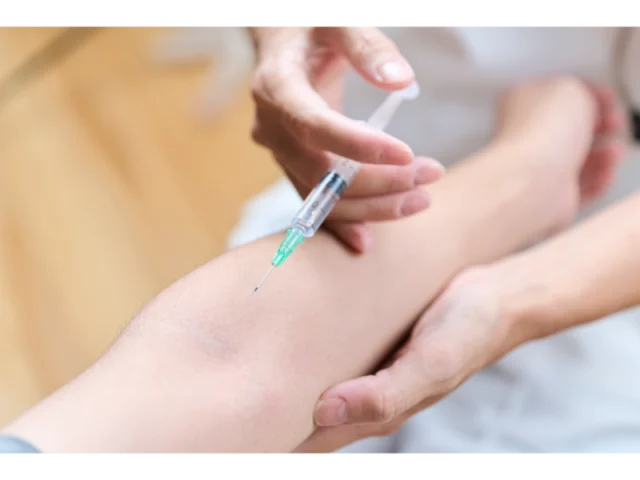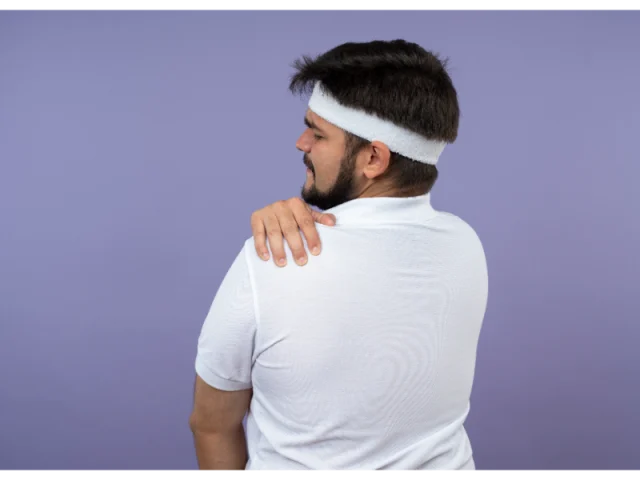Patellar dislocation occurs when the kneecap (patella) slips out of its normal position in the trochlear groove. This condition can result from acute trauma or repetitive micro-injuries. It is more common in athletes, young individuals, and people with a history of knee instability.
In this article, we will explore the symptoms, causes, diagnostic methods, and current treatment options for patellar dislocation. We will also include the perspective of orthopedic and traumatology specialist Dr. Özgür Oktay Nar on the subject.
Table of Contents
- Symptoms of Patellar Dislocation
- Why Does the Patella Dislocate?
- Diagnostic Methods
- Treatment Options
- Rehabilitation and Prevention
- Dr. Özgür Oktay Nar’s Approach
- Conclusion
- Frequently Asked Questions
Symptoms of Patellar Dislocation
Patellar dislocation usually occurs after sudden trauma. The symptoms are directly linked to the disruption of knee anatomy. Recognizing them early helps ensure quick diagnosis and timely treatment.
- Severe knee pain: Sharp pain appears suddenly and worsens with movement.
- Deformity: The kneecap moves out of position and appears visibly dislocated.
- Limited movement: Bending or straightening the knee becomes difficult.
- Swelling and bruising: The knee may swell quickly and change color.
- Instability: The joint feels loose or unstable during movement.
- Clicking sound: A pop or snap sound may occur at the moment of dislocation.
If one or more of these symptoms appear, patellar dislocation is likely. In such cases, consult an orthopedic specialist immediately.
Why Does the Patella Dislocate?
Several factors cause the patella to shift out of place. A person may change direction suddenly or fall with excessive force. The anatomical structure of the knee also plays a role in this condition.
- Direct trauma: A sudden impact forces the kneecap outward.
- Rapid movement: Quick directional changes destabilize the knee.
- Loose ligaments: People with hypermobility face a higher dislocation risk.
- High-riding patella: An anatomically elevated kneecap leads to instability.
- Genetic tendency: Family history increases the chance of dislocation.
A person can reduce risk by recognizing these factors. Athletes should wear protective gear during training.
Diagnostic Methods
The orthopedic specialist starts by listening to the patient’s complaints. Then, the doctor combines clinical findings with imaging results. This strategy ensures both accurate diagnosis and correct treatment planning.
- Physical examination: The doctor checks knee mobility and identifies pain points manually.
- X-ray imaging: The physician analyzes bone structure through standard radiographs.
- MRI scan: Magnetic resonance provides detailed visuals of soft tissue and ligaments.
- CT scan: The specialist uses 3D imaging for complex structural assessments.
The doctor chooses one or more of these methods based on clinical need. This approach supports timely and targeted intervention.
Treatment Options
After confirming the diagnosis, the orthopedic specialist plans a patient-specific treatment protocol. The doctor considers whether this is a first-time dislocation, the patient’s anatomy, and overall health. Therefore, treatment plans vary from one individual to another. The physician uses clinical findings and imaging data to select the most appropriate method.
In mild cases and first-time dislocations, the doctor usually chooses non-surgical methods. First, the physician manually realigns the kneecap. Then, the patient uses a brace that limits extreme motion but allows controlled movement. This approach supports healing and prevents recurrence.
Physical therapists also play a crucial role. Targeted exercises help strengthen muscles and improve ligament flexibility. This improves joint stability. Quadriceps and hamstring exercises keep the patella aligned during motion. The patient follows the physiotherapist’s guidance throughout the rehab program.
However, some cases require surgical intervention. If the dislocation recurs or the ligaments tear, the doctor recommends surgery. The surgeon repairs or reconstructs damaged tissues. In some cases, the doctor performs ligament transfer procedures. After surgery, the patient starts rehabilitation with a guided physiotherapy plan.
In conclusion, successful treatment depends on proper assessment and individualized care. With the right method, the patient returns to daily activities in a short time.
Rehabilitation and Prevention
The patient should begin rehabilitation without delay after treatment. This process improves recovery and prevents future dislocations. The physiotherapist supervises every stage and tailors exercises to the patient’s condition.
Patients strengthen their quadriceps, hamstrings, and hip muscles through specific training programs. These muscle groups maintain joint alignment and control patella movement. With stronger muscles, the patient ensures knee stability. In addition, targeted exercises improve proprioception. The body then reacts faster to sudden movements.
The orthopedic doctor and physiotherapist coordinate closely throughout rehabilitation. While the doctor monitors progress, the therapist adjusts exercise intensity. Patients also take daily precautions. For example, they hold handrails when climbing stairs and avoid locking their knees while bending. During physical activities, they wear knee braces or supportive footwear.
People who suffer repeated dislocations should adjust their lifestyle. Overweight patients reduce joint stress by losing weight. These preventive strategies shorten recovery and support long-term success.
Dr. Özgür Oktay Nar’s Approach
Dr. Özgür Oktay Nar develops personalized strategies to treat patellar dislocation. He carefully evaluates each patient and manages the diagnosis based on symptoms. He combines clinical examination with advanced imaging to reach a precise diagnosis.
Dr. Nar prioritizes conservative treatments in most cases. However, if the patient experiences recurrent dislocations or structural deformities, he recommends surgery at the right time. This approach avoids unnecessary operations and improves treatment outcomes.
Dr. Özgür Oktay Nar closely monitors physiotherapy and exercise protocols. He keeps his patients informed throughout the entire process. Updates the treatment plan based on patient feedback. He also provides lifestyle advice and aims to help patients return to daily life as quickly as possible.
Conclusion
Patellar dislocation requires early attention. People who ignore the symptoms may face permanent joint damage later. Therefore, anyone who experiences sudden knee pain or instability should consult a specialist quickly. Timely diagnosis and proper treatment reduce recovery time and improve outcomes.
Dr. Özgür Oktay Nar enhances treatment success by offering patient-specific solutions. He goes beyond medical procedures and emphasizes education and rehabilitation. His holistic approach helps patients regain mobility and confidence.
In summary, those who understand the patellar dislocation symptoms and treatment options can avoid surgery and return to an active life faster and safer.
To explore more orthopedic topics, visit our blog page.
Frequently Asked Questions
Can a dislocated kneecap heal on its own?
No. Anyone who experiences a patellar dislocation should visit an orthopedic doctor. Ignoring it may lead to long-term complications.
Does a first-time dislocation increase the risk of recurrence?
Yes. Young individuals and those with anatomical weaknesses face a higher risk. Proper treatment and rehabilitation help prevent future incidents.
Is surgery always necessary for patellar dislocation?
No. Doctors usually avoid surgery in first-time cases. However, repeated dislocations or structural issues may require surgical correction.
How long does rehabilitation take?
Recovery time varies. On average, patients return to normal activities within 4 to 8 weeks using guided exercises.
Can I reduce the risk of dislocation?
Yes. You can strengthen your muscles, use braces during sports, and maintain a healthy weight to lower your risk.























 Youtube Videos
Youtube Videos



